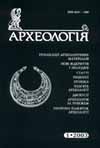de commentariis α (on commentaries)
Welcome to De Commentariis, crowd-sourcing commentaries — alpha edition. This (prototype) site is all about commentaries on ancient texts. Here you can construct your own commentaries on ancient texts, and view commentaries others have madefeatures
- Create commentary items on any available ancient text
- View other commentary items created by other users
- Vote items from other users to increase their reputation
- Filter items by reputation level
- View individual users commentaries
a note about the works available
We are reliant on works and editions from the Perseus project (see credits) which have been ported to the standard "CTS XML TEI" format. There are many texts which are missing, especially Greek ones (we also haven't yet done the job of converting the Greek text encoding to Unicode, so it looks like gibberish). Also some editions claim to be in the database but no actual text is available due to parsing errors. Poetry formats are particularly tricky. These sorts of errors will gradually be corrected over time, please have patience (the project founder is a Livy specialist and Livy isn't yet available so please have pity!).




















